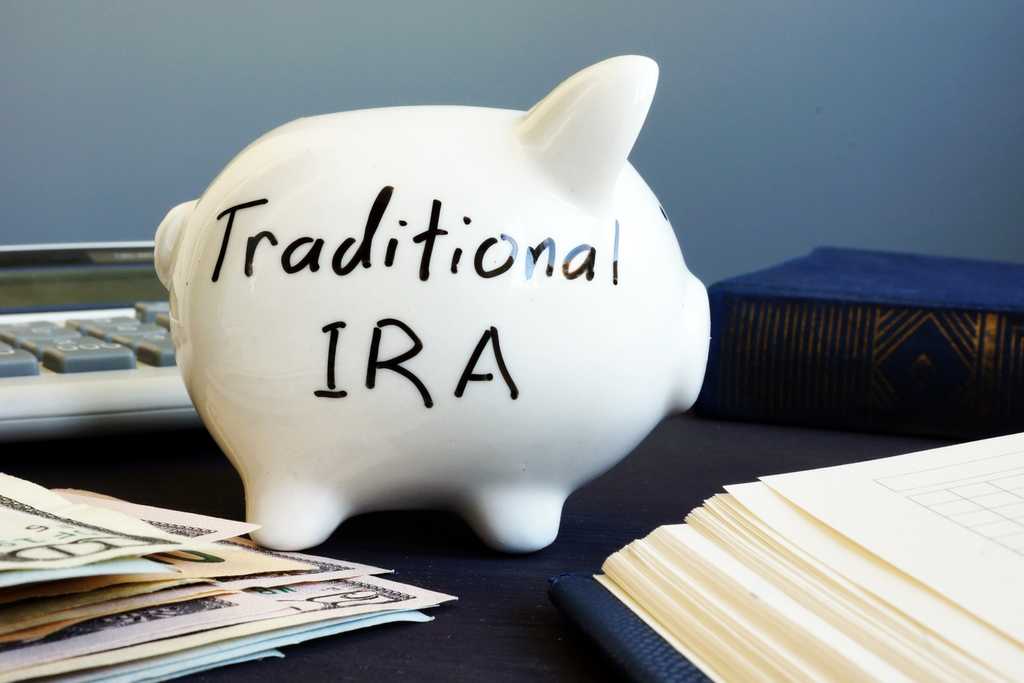A traditional IRA is an individual retirement account that lets eligible participants make pre-tax contributions that can compound over time. Money in a traditional IRA grows on a tax-deferred basis, meaning you don't pay taxes on your traditional IRA funds until you begin taking distributions in retirement.
Like all things touched by the Internal Revenue Service (IRS), however, traditional IRAs are governed by rules that dictate how much you can invest each year and who can deduct contributions.
This guide will explain all you need to know about traditional IRAs, from how they work to where to open one and the information you'll need to get started.
How Do Traditional IRAs Work?
Traditional IRAs let you save more money for retirement, and you can open this type of account in addition to other accounts you have like a workplace 401(k). Consider these additional details on how a traditional IRA works based on your income and other factors:
You choose where to open your traditional IRA: Unlike a workplace retirement account that is largely decided on by your employer, you are in charge of your traditional IRA. You can choose to open one online with a firm like Vanguard or Fidelity, but you can also go with a traditional bank or a robo-advisor like M1 Finance instead.
Contribution limits apply. In 2021, individuals can contribute up to $6,000 per year to a traditional IRA, a Roth IRA or both. The exception is if you're ages 50 or older, in which case you can contribute another $1,000 in catch-up contributions for a total contribution of $7,000 per year.
You decide how to invest. You're opening a traditional IRA on your own, so you need to have an idea of where you want that money to go. Most firms that offer a traditional IRA let you choose to invest into stocks and bonds, as well as index funds, mutual funds, ETFs and more.
Your ability to deduct contributions depends on your income. Your ability to deduct contributions to a traditional IRA on your taxes may be limited if you or a spouse have a retirement plan at work. For example, if you are married filing jointly with a spouse that has a retirement plan at work, you can only deduct the full amount on your taxes if your combined income is $198,000 or less in 2021. If you or a spouse are not covered by a retirement plan at work, you can deduct the full contribution on your taxes regardless of income.
Money grows on a tax-deferred basis. Contributions you make to a traditional IRA are able to grow on a tax-advantaged basis until you're ready to take distributions. We'll dive into the details of distributions and withdrawals later on in this guide.
Covered by Retirement Plan at Work? Traditional IRA Contribution Limits
If you are covered by a retirement plan at work, you may still be able to deduct all or part of your traditional IRA contribution on your taxes. The chart below explains whether you can based on your income and tax filing status.
| Tax Filing Status | Modified Adjusted Gross Income (MAGI) | Amount of Deduction |
|---|---|---|
Single or Head of Household | $66,000 or less | Full deduction up to the amount of your contribution limit |
More than $66,000 but less than $76,000 | Partial deduction | |
$76,000 or more | No deduction | |
Married Filing Jointly or Qualifying Widow(er) | $105,000 or less | Full deduction up to the amount of your contribution limit |
More than $105,000 but less than $125,000 | Partial deduction | |
$125,000 or more | No deduction | |
Married filing separately | Less than $10,000 | Partial Deduction |
$10,000 or more | No deduction |
Traditional IRA Distributions and Withdrawals
Thanks to the tax-deferred status of traditional IRAs, you have the benefit of watching your money grow without paying any taxes over time. However, you will be taxed at your ordinary income rate once you begin taking distributions in retirement.
If you need to take withdrawals before the age of 59 ½, a 10% penalty will also apply unless you qualify for one of several exemptions available. For example, you may be able to avoid the penalty if you are making an eligible purchase or a first home, you have a disability, you have eligible birth or adoption expenses and more.
Also, you don't have to begin taking withdrawals from your traditional IRA account at age 59 ½. If you prefer, you can leave your money to grow and compound for much longer than that.
However, you will have to begin taking Required Minimum Distributions (RMDs) once you reach age 70 ½ or 72, depending on your birthday.
Traditional IRA Benefits
The benefits of a traditional IRA are wide and varied. On an individual level, the perks of using this account can also depend on whether you can deduct contributions on your taxes.
The main benefits you'll get with a traditional IRA include the following:
- Money grows on a tax-deferred basis. You don't have to pay taxes on gains in your traditional IRA account during your working years. Funds in this account are able to grow and compound over time, and you only pay taxes when you begin taking distributions.
- Contributions may reduce your taxable income: If you're eligible to deduct contributions on your taxes, contributions to a traditional IRA can reduce your taxable income, and thus your tax bill.
- Anyone can contribute. Anyone with earned income can contribute to a traditional IRA, and this is true whether they are eligible to deduct contributions or not.
- You're in control. You can open your traditional IRA with any firm or brokerage of your choosing, and you get to choose the investments for your account.
How to Open a Traditional IRA
Opening a traditional IRA is easy thanks to technology and the internet. For the most part, you only need to choose a robo-advisor, brokerage firm or bank you trust to get started. Here are some potential options to check out and compare:
Brokerage Firm Examples:
- Vanguard
- Fidelity
- SoFi
- E*TRADE
- Charles Schwab
Robo-Advisor Examples:
- Wealthfront
- Personal Capital
- M1 Finance
Once you decide on a brokerage firm or bank, you can open an account with information such as your name, your address, your phone number, your Social Security number and your banking details. Most online firms let you fund your traditional IRA online via electronic transfer.
Traditional IRA vs. Other IRAs
There are plenty of other types of IRAs out there, and chances are good you have probably heard of some of them. Popular examples include the SEP IRA and the Simple IRA.
However, most people wind up comparing the traditional IRA to the Roth IRA. Where the traditional IRA lets some users deduct contributions on their taxes and the money grows on a tax-deferred basis over time, a Roth IRA requires contributions with after-tax dollars. Likewise, a traditional IRA requires you to pay taxes when you take distributions in retirement, whereas a Roth IRA does not since you paid taxes upfront.
Both the traditional IRA and the Roth IRA are subject to the same combined contribution limit in 2021. You can contribute up to $6,000 across both accounts combined in 2021, or $7,000 total if you're ages 50 or older.
Frequently Asked Questions (FAQ)
Is a traditional IRA the same as a 401(k)?
A 401(k) plan is a type of retirement plan offered through an employer, and it is much different than a traditional IRA. For example, contribution limits for 401(k) plans are significantly higher. In 2021, individuals can contribute up to $19,500 to a 401(k) plan. Those ages 50 and older can also contribute an additional $6,500 in catch-up contributions.
Can you have a traditional IRA and a Roth IRA?
You can have a traditional IRA and a Roth IRA at the same time.
Is a Rollover IRA a traditional IRA?
A Rollover IRA lets you move funds from an old employer-sponsored retirement plan into a new IRA. That's the biggest difference between a rollover IRA and a traditional IRA.
Can you contribute to Roth and a traditional IRA?
You can contribute to a Roth IRA and a traditional IRA in the same year. However, you can only contribute the maximum annual contribution limit to both accounts combined in a single year.

